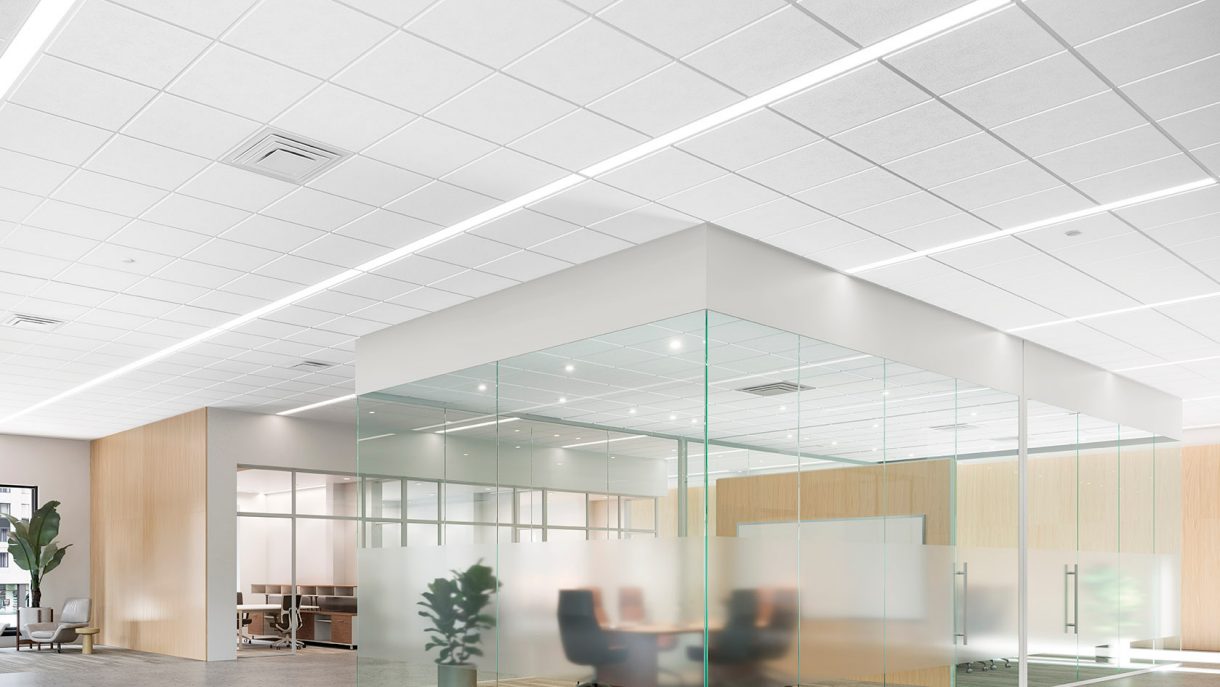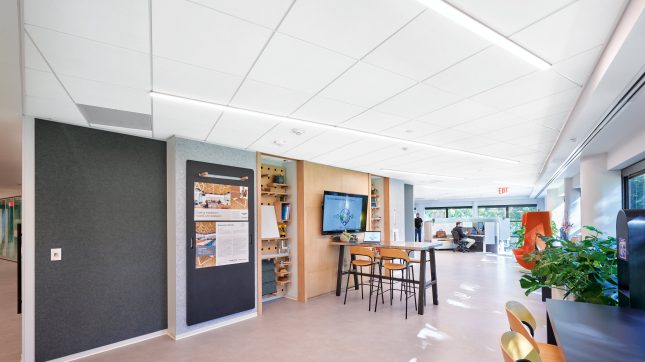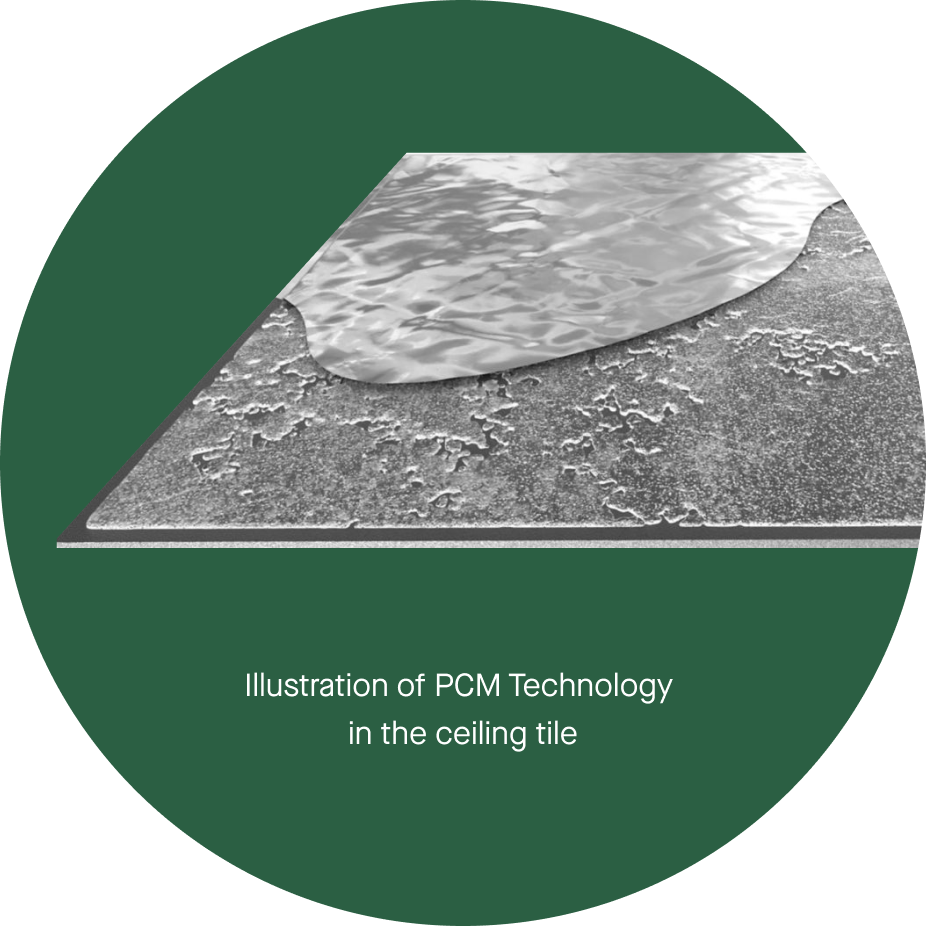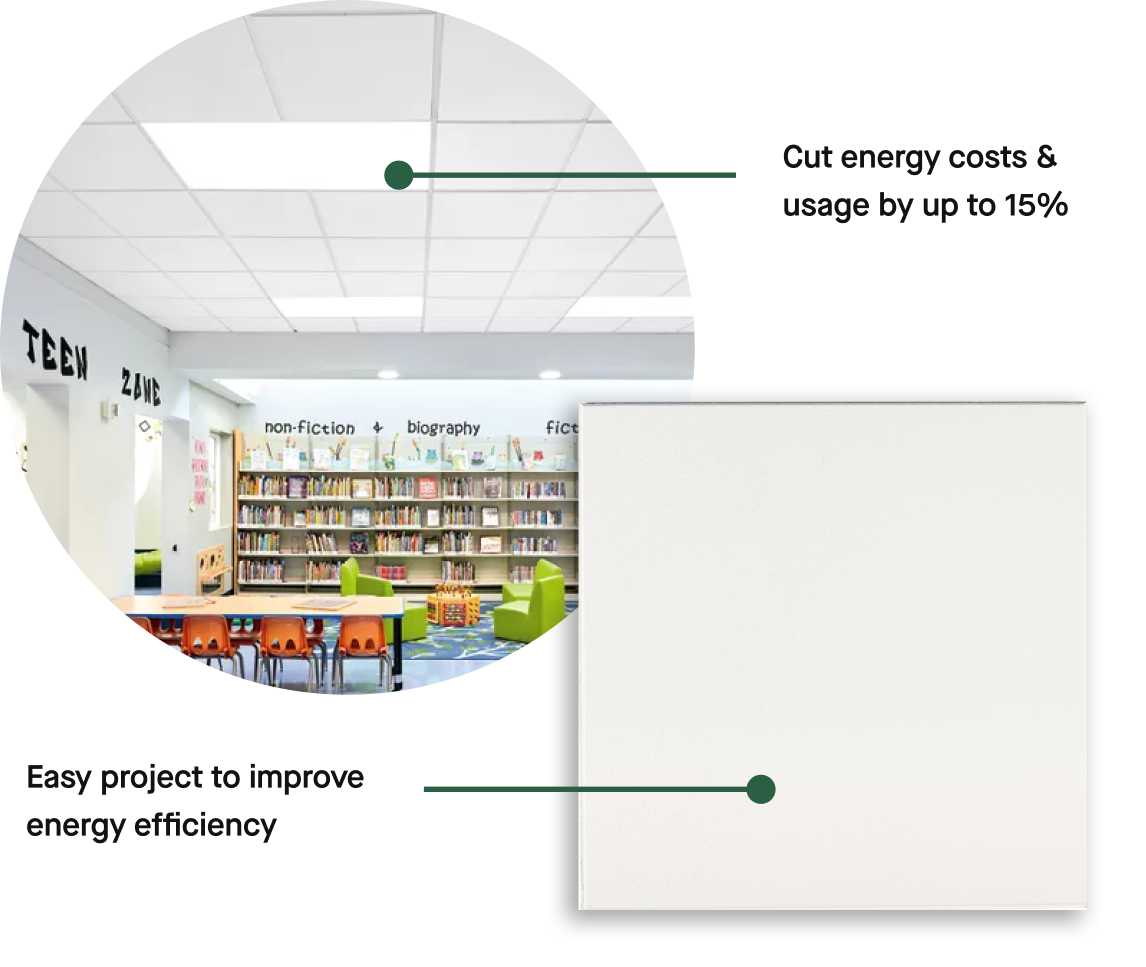

How Does a Ceiling Tile Regulate Temperature?
- TEMPLOK Phase Change Material (PCM) melts and freezes around a comfortable 72°F.
- During warm weather, PCM gradually melts and passively cools the space as the building is warmed during the day.
- During cool weather, the stored heat is released back into the building as the building temperature drops, re-freezing the PCM.
*See our Technical Guide for more details
Ready to Save on Energy?
Fill out the form to connect with an Armstrong rep and learn more about how you can benefit from energy saving ceilings.
Call Us
(717) 967-8182 (Mon-Fri 8AM-8PM EST)
Chat With Support
Chat Now
Browse TEMPLOK Solutions
TEMPLOK Ceiling Tiles in Action
Managing Cooling Demand with TEMPLOK Ceilings

The Challenge
Keeping workspaces cool. Rising afternoon heat, peak demand charges, and inefficient cooling created the need for a smarter solution.

The Approach
CALLA TEMPLOK Energy Saving Ceilings were installed to manage peak heat loads, turning the ceiling into a thermal battery that reduces cooling demand and improves building efficiency.

The Results
TEMPLOK ceiling panels significantly contributed to peak load reduction and boosted cooling efficiency. After installing TEMPLOK and pre-cooling the building, peak afternoon energy use was reduced by about 30%.
* See our Technical Guide for more details
Frequently Asked Questions
-
How can a ceiling help with energy costs and consumption?
TEMPLOK ceilings contain temperature-regulating Phase Change Material (PCM). This temperature-regulating property of PCM allows for reduced HVAC operating costs and energy use. Energy Saving Ceilings with TEMPLOK are an easy way to contribute to your overall energy and cost savings initiatives.
-
What are the benefits of installing Energy Saving Ceilings?
Installing ceiling tiles backed with phase change material (PCM) technology contribute to a more comfortable environment while decreasing energy consumption. The primary benefits include temperature regulation, reduced hot/hold complaints, reduced heating and cooling costs, and more efficient HVAC operations.
-
How do TEMPLOK Energy Saving Ceilings work?
TEMPLOK ceilings use a specially designed phase change material (PCM) technology that melts and freezes around 72°F. During warm periods, the PCM gradually melts and passively cools the space while also trapping the excess heat. The stored heat can be released back to the building at night as temperature drops, re-freezing the PCM technology. During cool periods, and in a building that naturally gains excess heat during the day, PCM can help to retain the excess heat to keep the building warmer at night.
-
What materials are used to make the phase change material (PCM) technology used in TEMPLOK ceiling tiles?
The phase change material (PCM) technology contains a water and salt solution that crystallizes and dissolves as it changes phase. The PCM is sealed in a metalized film adhered to the back of the ceiling panel.
Resources
Technical
Sustainability
Ready to Save on Energy?
Fill out the form to connect with an Armstrong rep and learn more about how you can benefit from energy saving ceilings.
Call Us
(717) 967-8182 (Mon-Fri 8AM-8PM EST)
Chat With Support
Chat Now



